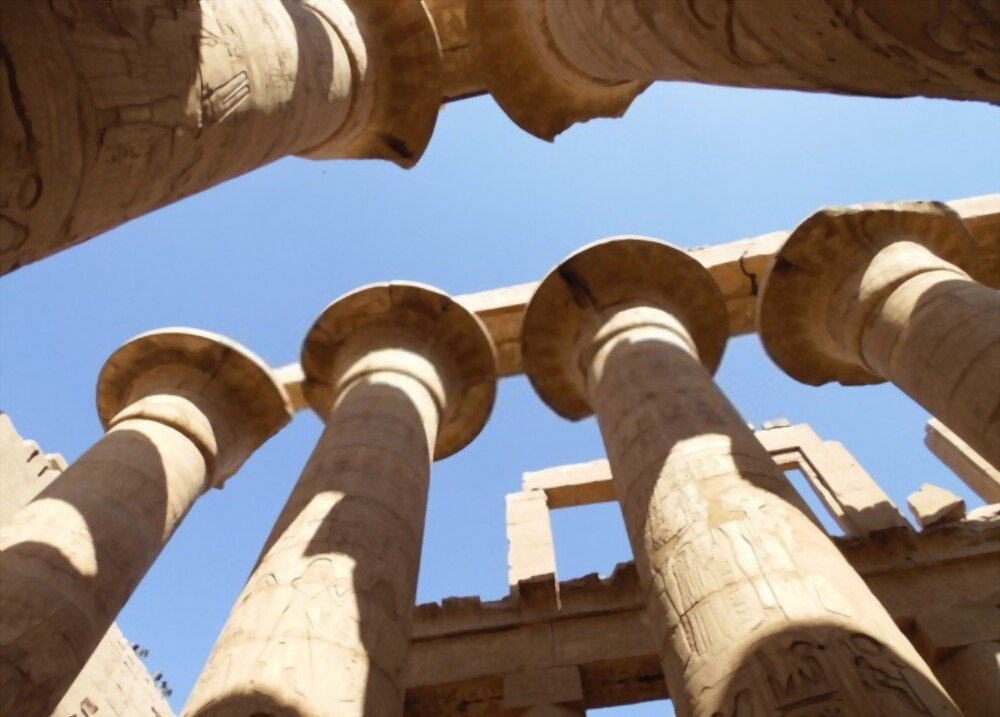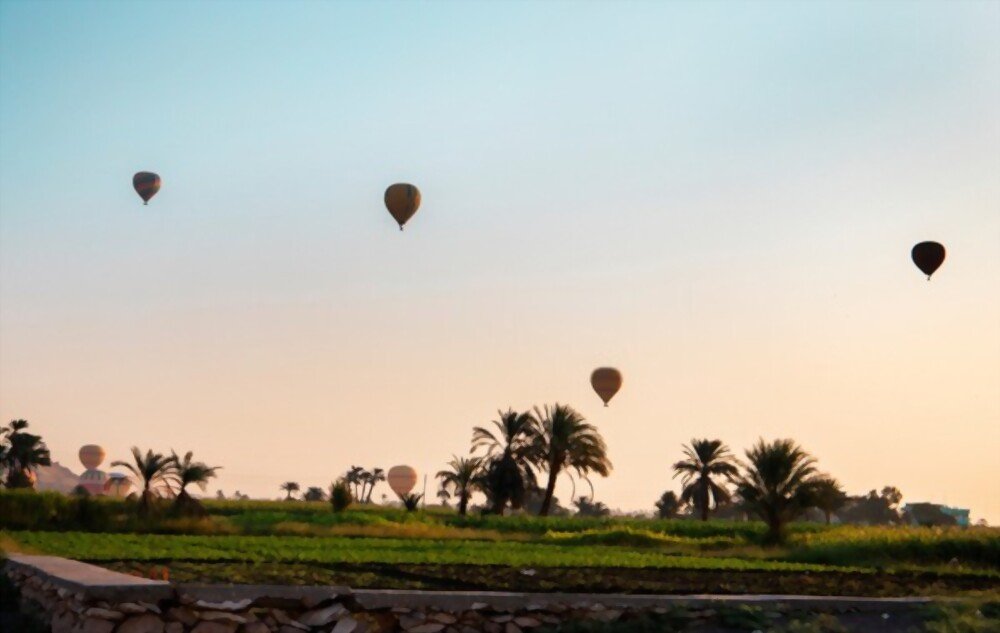“Luxor”..History and life on the Shatt Al-Nil

“Luxor”..History and life on the Shatt Al-Nil
Despite its small area, Luxor is already a storehouse of Egyptian antiquities in the literal sense of the word
“The City of Hundred Gates,” “The City of the Sun,” “The City of Light,” “The City of the Scepter,” “Thebes.” Many names refer to one place: “Luxor.”

Here in this city located in the south of Egypt, time mixes, its old, where the Pharaonic temples with their towering columns and the inscriptions of their impressive stone walls, and its present, where the “ferryman” carries the city’s people daily from an eastern land to a western one, separated by the Nile River. You see a festival of flying colored balloons swimming in a clear sky, drawing a picture that will not leave the visitor’s memory.
Two cities, one for the living and one for the dead

On the eastern bank there are the palaces of the kings and religious temples such as Karnak and Luxor, and this area was called the city of the living, in the other side there is the city of the dead, where the funerary temples that are located on the western bank of the river, most notably the Ramesseum Temple, the tombs of the Valley of the Kings, and the mortuary temple of Queen Hatshepsut.

It is natural, then, for the visitor to attend the sound and light show that takes place at night in the Karnak temple, where he hears a melodious voice repeating: “Greetings to you, who made the pilgrimage to Upper Egypt, and looked forward to the glories in the Happy Valley, here begins history and the universe is nascent.”

This region was the meeting point of the civilizations of the ancient countries of the East in the middle of the second millennium BC, where the bounties of Africa, Asia and the islands of the White Sea flowed to it, and messengers of all countries came to it every year, and this is what was recorded on the walls of their temples and tombs.

Karnak, which is located north of the city, which the Greeks called “the temple of heaven above the earth” because its columns almost touch the edges of the sky, can be considered the center of its religious temples with its distinctive design. In fact, it is not a single temple, but rather includes a variety of temples, in the construction of which a large number of kings participated in the course of antiquity.

There is a road along which a group of statues of rams extends, linking Karnak with another temple of the “City of the Living”, the Temple of Luxor, which is located to the south of the city

This temple is also characterized by an architectural symmetry of a special character, in terms of the stacking of its columns, which provides a standard distribution of daylight and sunlight at the moments of sunrise and sunset.
The Nile is the city center

The Nile plays a vital role in the life of Luxor, and is the center of the city around which life is organized. It is a tourist attraction among its landmarks, spread on its banks, “felucca”, “lanch” and “small sailing boats”, as well as larger boats that tourists seek on a trip that extends to the city of Aswan.It is also a vital artery of the city, through which its people move daily from the mainland area From the west to the east mainland, on their way to work, on the river ferry.
Traditional crafts.. the secret of workmanship

The most important main street of Luxor is the Market Street. In this street there are shops and commercial centers that display traditional products for which the city is famous, such as porcelain and alabaster products. Workshops for the manufacture of these products are spread in Luxor, which is understandable due to the high number of workers in the tourism field.

the most important of which are modern models of ancient Pharaonic statues, small brides, cooking tools and utensils of various shapes and sizes. And all of these handicraft products are of a high degree of perfection because they have been passed down from one generation to the next while preserving their traditional character.
View of Luxor from the top

The pleasure of a visitor to Luxor in his discoveries of the old city can only be completed by an adventure he takes in the air, when he rents a place with others in a balloon, or a flying balloon, to overlook from the top, for about an hour, a fascinating and dazzling scene in which he sees the entire city beneath him without any barrier or veil . The shortest of this balloon appears Luxur as pieces stacking side by side to form an unrivaled “big shot” that gathers all the city’s charms: the Nile, the stone and humans.
The flying balloon flight takes place at dawn due to the nature of the weather at that time and the movement of winds that help the balloon to rise in the air, and in order for its rider to enjoy seeing the morning breathing in the shade of the gentle sun that gradually increases in strength to fill the parts with light, the city begins to swim in it slowly.
Karnak, which is located north of the city, which the Greeks called “the temple of heaven above the earth” because its columns almost touch the edges of the sky, can be considered the center of its religious temples with its distinctive design. In fact, it is not a single temple, but rather includes a variety of temples, in the construction of which a large number of kings participated in the course of antiquity.
Read more about :
- The Meidum pyramid, the royal tomb of king Sneferu
- The Architectural Splendor of Al-Mu’izz Mosque
- Tabali Egyptian street food restaurant in New Cairo
- The Coptic Museum in Egypt
- Dive into the Mysteries of Heraklion: The Lost City Beneath the Waves
accuracy ages artifacts artificial beautiful location Black Desert bosom buried calacified limestone rocks cemetery clove cook crocodile museum display eat egypt great nile Kayaking kilo large crocodiles largest mash meters Mosque Mountain biking mummification museum Obstacle Valley oharaonic oil pan park Preparation process put river Safari Park showing single single animal stage the world units vows worship





